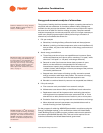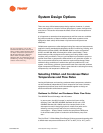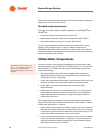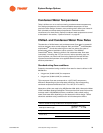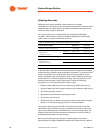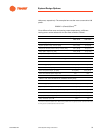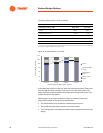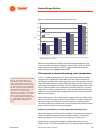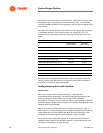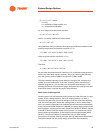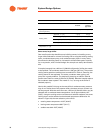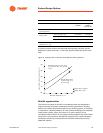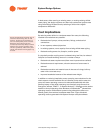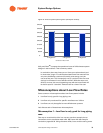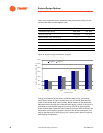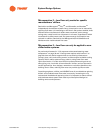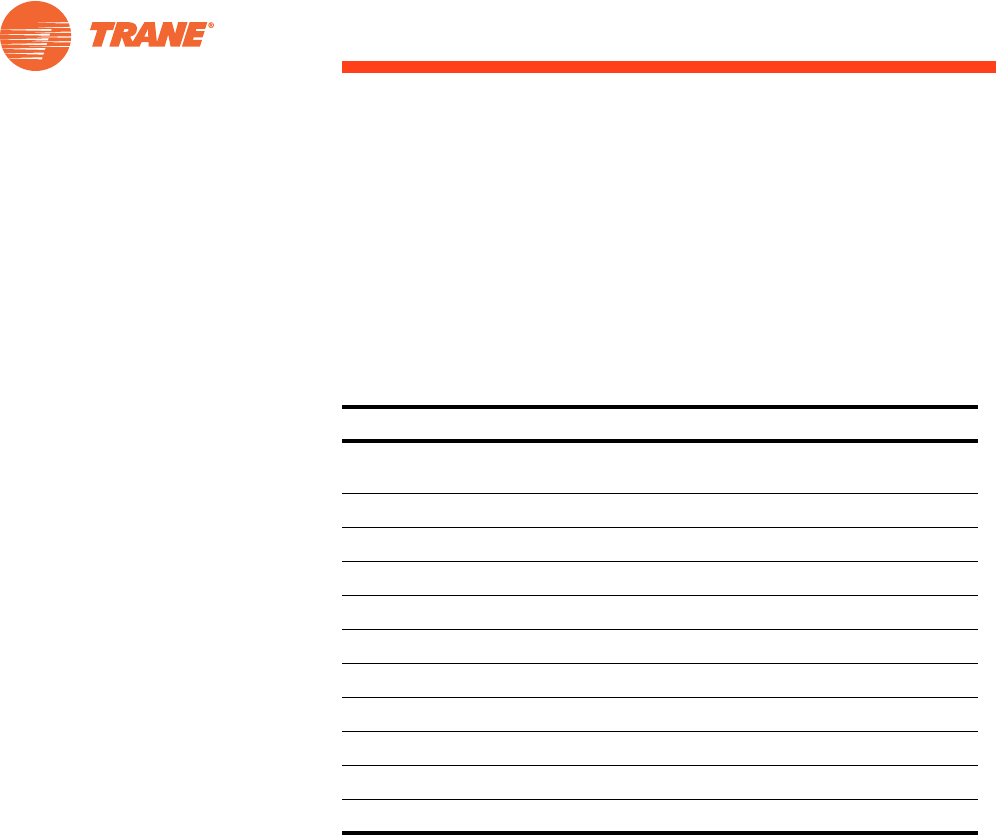
34 Chiller System Design and Control SYS-APM001-EN
System Design Options
performance of this coil when it is selected with a 44°F [6.7°C] entering fluid
temperature and a 10°F [5.6°C] fluid temperature rise (T). To provide the
required 525 MBh [154 kW] of cooling capacity, the coil requires 105 gpm [6.6
L/s] of water.
The right-hand column shows the performance of same coil, but in this case
it is selected with 40°F [4.4°C] entering fluid and a 15.6°F [8.7°C] T. To
provide the equivalent capacity, the coil requires only 67.2 gpm [4.2 L/s] of
water.
By lowering the entering fluid temperature, this coil can deliver the same
cooling capacity with 36% less flow, at less than half of the fluid pressure
drop, with no impact on the airside system.
Cooling-tower options with low flow
Smaller tower
Like coils, cooling towers are heat exchangers—although often
misunderstood heat exchangers. The tower exchanges heat between the
entering (warmest) water temperature and the ambient wet-bulb
temperature. Therefore, in a new system or when a cooling tower is replaced,
a low-flow system design allows a smaller, more efficient cooling tower to be
selected. How is this possible?
Keep in mind that a cooling tower is not limited to a specific tonnage. A
cooling tower is a heat exchanger that exchanges heat between the entering
water temperature and the ambient wet bulb. By varying the flow or the
temperature, the tower capacity can be changed—often increased.
Since the amount of heat to be rejected, Q, is approximately the same in
standard-rating-condition and low-flow systems, we can estimate the heat
exchange area necessary to reject the heat:
Table 9. Impact of supply temperature and flow rate on cooling coil selection
“Conventional”
system design
“Low flow”
system design
Coil face area, ft
2
[m
2
] 29.01 [2.69] 29.01 [2.69]
Face velocity, fpm [m/s] 448 [2.3] 448 [2.3]
Coil rows 6 rows 6 rows
Fin spacing, fins/ft [fins/m] 85 [279] 85 [279]
Total cooling capacity, MBh [kW] 525 [154] 525 [154]
Entering fluid temperature, °F [°C] 44 [6.7] 40 [4.4]
Leaving fluid temperature, °F [°C] 54 [12.2] 55.6 [13.1]
Fluid T, °F [°C] 10 [5.6] 15.6 [8.7]
Fluid flow rate, gpm [L/s] 105 [6.6] 67.2 [4.2]
Fluid pressure drop, ft H
2
O [kPa] 14.0 [41.8] 6.3 [18.8]



